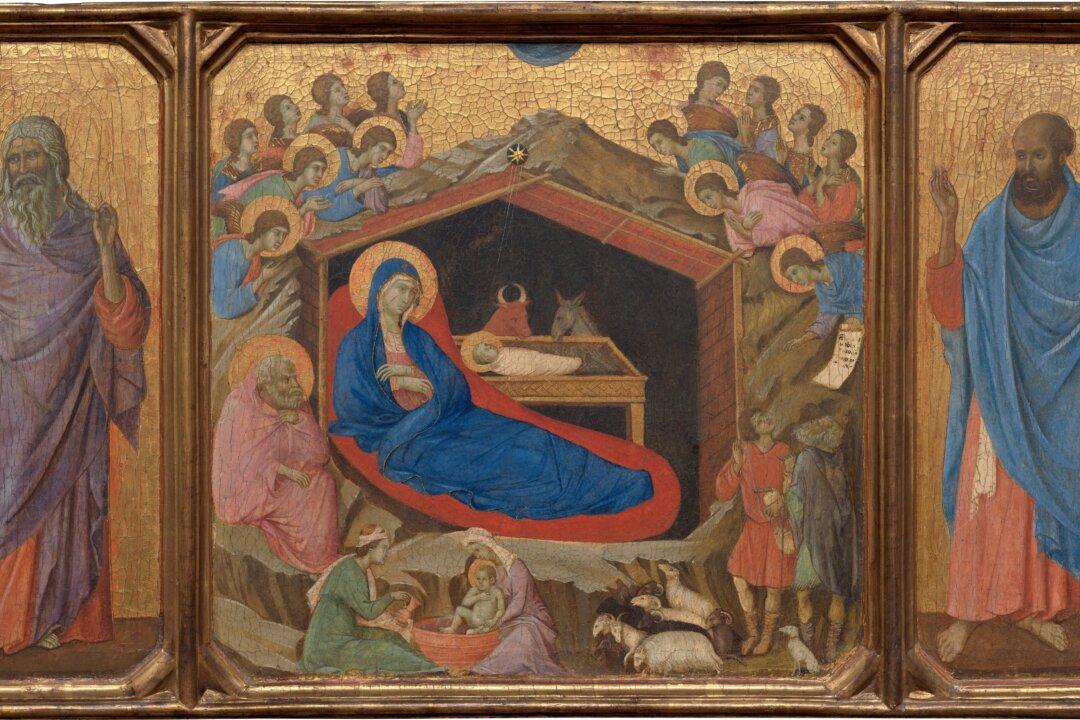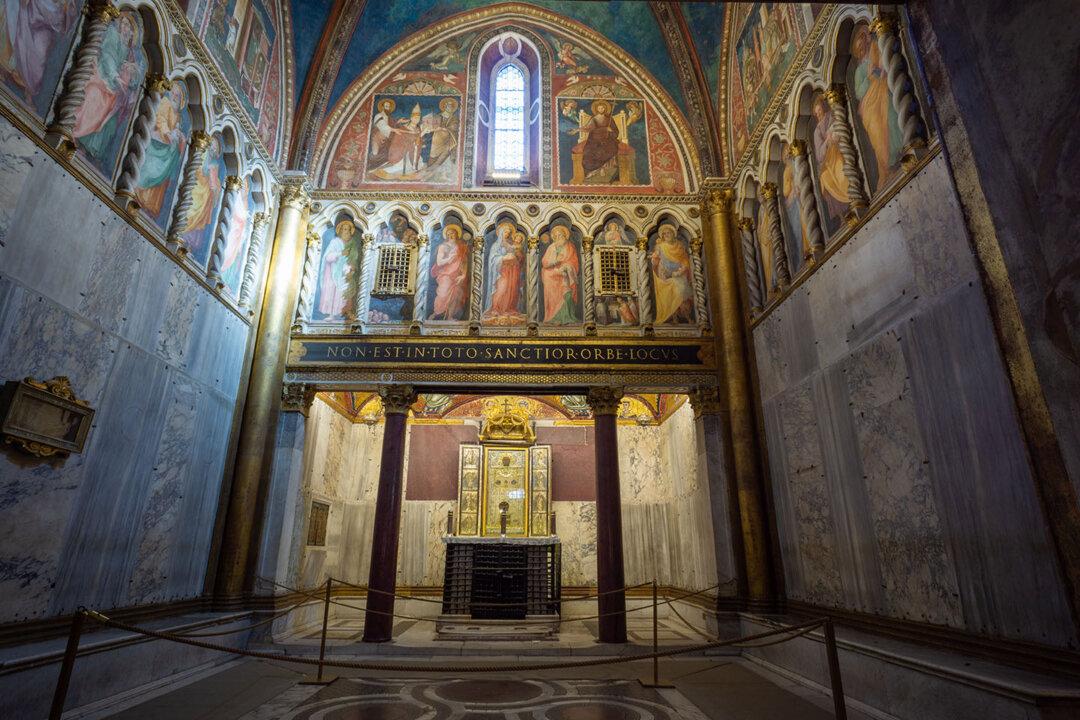Few works of art are as well-known today as “The Thinker” by French sculptor Auguste Rodin. The monumental nature of this single monolithic figure seems to be all self-sufficient, capable of symbolizing the most sophisticated of human activity—thinking. It’s no wonder that this image, ever since its rise to popularity in 1903, has been the most frequently used work of art to represent philosophy.
Here, the nude male is lost in contemplation. His one hand rests easefully on his kneecap, while the other holds up his weighty head. His right elbow, reaching across his chest to the left, guides the entire body into a stressed but restrained torsion. Tensed muscles undulate on the figure, but they do not deform or disturb the silent pose and pensive mind. It is a simple image of a man sitting on a rock, with expression found solely in the language of the body.





